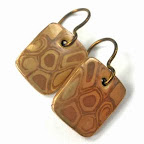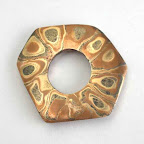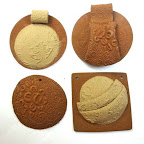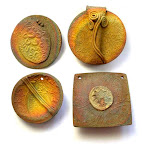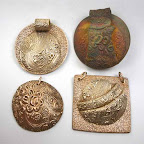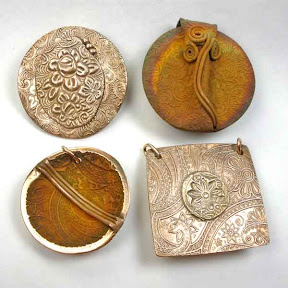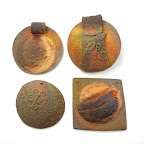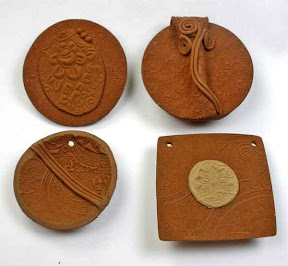 In Part 1 of this series, I raised the issue of how to determine reasonable prices for the pieces I create, prices that appear consistent across various designs and media. This is getting trickier as I have added materials such as bronze, copper, and steel to my repertoire, and thus moved beyond the silver and, occasionally, gold that I started with. In that previous post, I talked about issues such as the time directly involved in various aspects of creation, including that devoted to preparation, firing, and finishing of each piece. In this one, I will address a number of business-side issues: they include some aspects of creation that are perhaps better grouped together under the category known as …
In Part 1 of this series, I raised the issue of how to determine reasonable prices for the pieces I create, prices that appear consistent across various designs and media. This is getting trickier as I have added materials such as bronze, copper, and steel to my repertoire, and thus moved beyond the silver and, occasionally, gold that I started with. In that previous post, I talked about issues such as the time directly involved in various aspects of creation, including that devoted to preparation, firing, and finishing of each piece. In this one, I will address a number of business-side issues: they include some aspects of creation that are perhaps better grouped together under the category known as …
Overhead. Even though the bronze / copper / steel raw material itself costs less than silver, there are many other higher or additional cost involved in working with the non-precious metals. Here are just a few examples from “behind the scenes” with those:
 Beyond how the firing requirements of these metals impact my time (discussed last time), each piece that size also puts 8 times the wear & tear on my kiln when compared to a similar piece made from fine silver. On top of that, other kiln-related factors like the time and temperature combinations and the oxygen-reduced atmospheres used with these clays will further shorten the expected lifetime of the kiln. While I do still expect the kiln to last for years, I also figure that I need to add a bit more to the price of each base-metal piece so that, when the time comes, I will be able to replace that relatively expensive piece of equipment earlier than might otherwise be expected.
Beyond how the firing requirements of these metals impact my time (discussed last time), each piece that size also puts 8 times the wear & tear on my kiln when compared to a similar piece made from fine silver. On top of that, other kiln-related factors like the time and temperature combinations and the oxygen-reduced atmospheres used with these clays will further shorten the expected lifetime of the kiln. While I do still expect the kiln to last for years, I also figure that I need to add a bit more to the price of each base-metal piece so that, when the time comes, I will be able to replace that relatively expensive piece of equipment earlier than might otherwise be expected.- Covering the cost of firing boxes and carbon will also add a little bit to each copper, bronze, and/or steel piece too; they are not needed with the precious metals.
- Each time I use a new kind of box or of carbon, there’s both time and material involved in testing the firing schedule. I should somehow spread that (small but real) cost over a range of subsequent pieces too.
- I’m still working out which tools to share across the various metals (meaning I have to spend time cleaning them thoroughly each time I switch between the precious and non-precious metals) versus which tools I use often enough that I should just buy another copy of the same one to use with the base metals (and clearly label each so I don’t get them confused, and have to spend time washing anyway). Either way, however, there are small portions of the total cost to be spread across a number of items I’ll make with them.
- I ended up buying a small refrigerator for my studio too: while there is a nice little bonus in having that to keep some lunch and beverage items cold, I see it as overhead for these pieces because I need to freeze any pre-mixed clay that I don’t use in a single session.
- For pieces that require extra finishing time, there is also the cost of extra items used for sanding and finishing since they will thus wear out much more quickly. That also adds a little more to the cost of each such item.
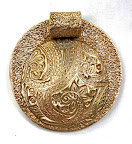 That’s not even a complete list of the extra costs, but it’s a good sample of them. Now, none of those involve earth-shattering amounts. But there are other forms of “overhead” to be accounted for with every piece made, regardless of medium, and then every time you add a few cents for this, and then a few more for that because you’re working with base metals, and then you apply the appropriate mark-up factors (e.g., gallery commissions) to the whole thing …. well, the sum-total of such additions simply runs up the final price of any artwork.
That’s not even a complete list of the extra costs, but it’s a good sample of them. Now, none of those involve earth-shattering amounts. But there are other forms of “overhead” to be accounted for with every piece made, regardless of medium, and then every time you add a few cents for this, and then a few more for that because you’re working with base metals, and then you apply the appropriate mark-up factors (e.g., gallery commissions) to the whole thing …. well, the sum-total of such additions simply runs up the final price of any artwork.
(It is probably worth noting that some price formulas treat various overhead costs in entirely different ways. Some approaches do exclude a lot of factors directly, on a theory that goes something like this: If, for example, Ethel’s studio rental is $X / month, while Fred’s studio costs half that and Lucy works out of her home, and they all do comparable work, does that automatically make Ethel’s products twice as valuable as Fred’s, and even Fred’s more valuable than Lucy’s? Instead, all three could charge an appropriate amount for their time, and then pay any rent out of those earnings. If Lucy and Fred are able to work in cheaper spaces than Ethel, then any money left over after paying the rent would result in a “bonus” for finding economical work-space. Even if I go that route, however, I still need to be sure I’m charging enough somehow to cover “overhead” costs out of earnings.)
But that’s enough from me now on overhead for now. Have you encountered any other important factors, ones that I’ve overlooked here, in working with base-metal clays, that you feel drive up their price? Stay tuned, too, because I’ve got one more post dancing around in my brain that addresses a few other issues related to all this. (The big question, as ever, is when I’ll find the time to get those ideas to move from my brain down to my fingers and onto a blog post! It’s likely to be at least a week, maybe more….)
[Update: Yes, well, that “maybe more” was right. I got sidetracked into a variety of other projects in a number of other areas. And, with metal clay, I’ve been trying to work out a number of new ideas. I’ll be discussing a few of those next. I do still plan to return to this topic but, when I didn’t finish it up in October, I’m thinking I may now just put it on hold until after the holiday season. More shortly….]
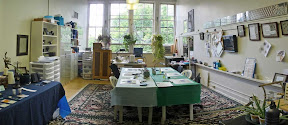
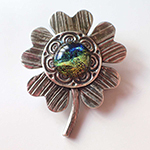 Artsmiths of Pittsburgh
Artsmiths of Pittsburgh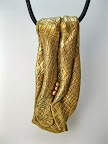 Hoyt Center for the Arts, New Castle, PA
Hoyt Center for the Arts, New Castle, PA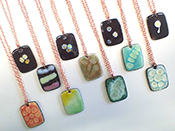 Portage Hill Gallery, Westfield, NY
Portage Hill Gallery, Westfield, NY _Open Houses in my Studio
_Open Houses in my Studio _Or…contact me about hosting a private party!
_Or…contact me about hosting a private party!
